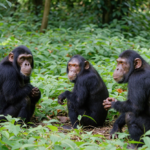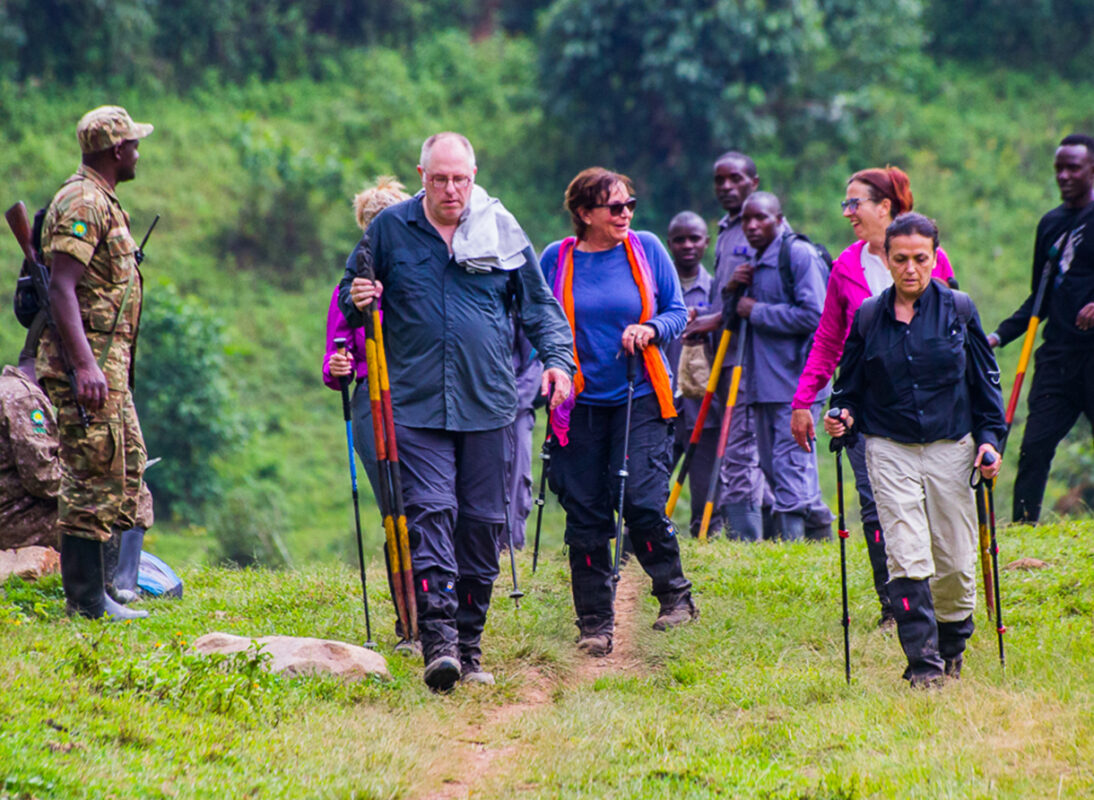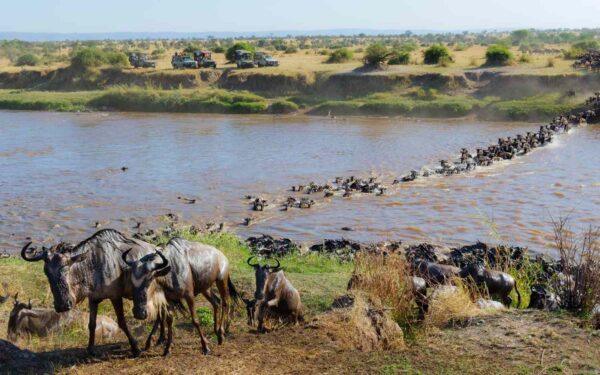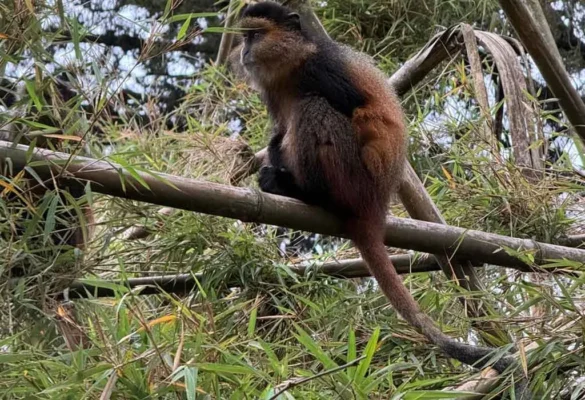
What Time Does Chimpanzee Tracking Start in Uganda?
November 17, 2025What Safety Measures Are Taken During Chimpanzee Tracking?
November 18, 2025What Should I Wear on a Walking Safari in Uganda?
For travelers planning an adventure, the question often arises: “What should I wear on a walking safari in Uganda?” The answer is crucial because proper attire enhances your experience, ensures comfort, and maximizes safety during Uganda Safaris. Uganda offers a unique safari experience where walking safaris allow travelers to explore wildlife, lush forests, wetlands, and savannahs up close. Whether you are on Uganda Gorilla Trekking Safaris, Uganda Chimpanzee Safaris, Uganda Wildlife Safaris, or Uganda Birding Safaris, wearing the right clothing and gear makes a significant difference in your comfort and ability to enjoy the adventure.
Why Dressing Right Matters on a Walking Safari in Uganda
Walking safaris are immersive. Unlike traditional game drives, you move through nature on foot, experiencing the sounds, smells, and movements of the wild firsthand. This close interaction requires practical and functional attire that provides protection against the sun, insects, and variable terrain. Additionally, walking safaris can be physically demanding, especially when trekking through dense forests like Bwindi Impenetrable or the savannahs of Murchison Falls. Renai Safaris curates walking safari experiences where dressing appropriately ensures that travelers remain comfortable, safe, and able to fully engage with Uganda’s remarkable biodiversity, wildlife, and cultural encounters.
What Clothing Is Essential on a Walking Safari in Uganda?
When asking, “What should I wear on a walking safari in Uganda?”, it is important to understand that clothing choices directly affect your experience. Neutral-colored clothing such as khaki, beige, olive, or brown is highly recommended. These colors blend with the environment, minimizing disturbances to wildlife while providing a natural camouflage for unobstructed wildlife viewing. Lightweight, breathable fabrics are ideal for walking safaris, as they allow you to move freely and stay cool in Uganda’s tropical climate.
Long-sleeved shirts and trousers are essential to protect against sun exposure, insects, and thorny vegetation, particularly in forested areas like Budongo Forest during Uganda Chimpanzee Safaris or Bwindi Impenetrable Forest during Uganda Gorilla Trekking Safaris. Layering is also important, especially for early morning or late afternoon walks when temperatures can drop, particularly in highland regions. A lightweight rain jacket or poncho is indispensable, as Uganda experiences occasional showers even during the dry season.
Proper footwear is another critical consideration. Closed-toe hiking boots with good grip and ankle support are recommended for uneven terrains, muddy paths, and steep inclines. For short, gentle trails or flat savannah walks during Uganda Wildlife Safaris, comfortable walking shoes may suffice, but always prioritize safety and support. Accessories such as a wide-brimmed hat, sunglasses, and a scarf provide sun protection, while moisture-wicking socks prevent blisters during long treks. Renai Safaris ensures that travelers are well-prepared with detailed packing lists and expert advice to make each walking safari a safe, enjoyable, and memorable experience.
What Gear Should I Bring for a Walking Safari in Uganda?
Travelers frequently ask, “What should I wear on a walking safari in Uganda besides clothing?” The answer is simple: strategic gear complements your attire to enhance comfort and safety. A reliable daypack is essential for carrying water, snacks, binoculars, sunscreen, insect repellent, and personal items. Hydration is crucial on walking safaris, particularly during Uganda Birding Safaris or treks in hotter regions such as Queen Elizabeth National Park.
Binoculars are indispensable for birdwatchers seeking to spot Uganda’s incredible avian diversity, including Albertine Rift endemics and wetland species. Camera equipment, ideally lightweight, allows travelers to capture unforgettable moments, whether observing gorillas, chimpanzees, elephants, or rare birds. Trekking poles can be helpful for those undertaking longer walks on uneven forest trails or hilly terrains during Uganda Gorilla Trekking Safaris.
Renai Safaris recommends insect protection as a must-have, including repellent sprays and anti-mosquito clothing for areas like Kibale Forest during Uganda Chimpanzee Safaris. Sunscreen, lip balm, and a reusable water bottle further enhance comfort. By combining practical attire with essential gear, travelers ensure their walking safari is not only safe and enjoyable but also fully immersive. Preparing adequately allows visitors to focus on wildlife observation, cultural interactions, and the breathtaking landscapes that make Uganda Best Safaris truly world-class.
Can Walking Safari Attire Be Used for Gorilla and Chimpanzee Tracking?
Many travelers ask, “Can walking safari clothing be used for gorilla and chimpanzee trekking in Uganda?” Absolutely. The principles of practical, neutral-colored, and protective clothing apply directly to Uganda Gorilla Trekking Safaris and Uganda Chimpanzee Safaris. Dense forests, muddy trails, and changing weather conditions require layers, long sleeves, and durable footwear for comfort and safety.
During gorilla trekking in Bwindi or Mgahinga, or chimpanzee tracking in Budongo or Kibale, clothing must also protect against thorny vegetation, insects, and sun exposure when emerging from forest canopies. Breathable fabrics keep you cool, while waterproof jackets safeguard against sudden rain showers in tropical forests. Renai Safaris emphasizes proper preparation, ensuring travelers are equipped for both wildlife and birding activities while enjoying safe trekking experiences. Combining walking safaris with primate tracking also allows travelers to experience Uganda’s natural diversity fully. This synergy maximizes convenience and efficiency, providing travelers with a seamless and enriched Uganda Safaris experience.
What Cultural Considerations Should I Keep in Mind When Dressing?
Another question often asked is: “What cultural considerations should I keep in mind while dressing for a walking safari in Uganda?” While wildlife safety and comfort are priorities, cultural sensitivity is also important, especially during Uganda Cultural Safaris or visits to local communities. Modest attire, such as shirts covering the shoulders and long trousers or skirts, is respectful in rural and traditional areas.
Colors should remain neutral to avoid drawing attention, especially when interacting with local communities. Wearing bright or flashy clothing may be distracting or culturally insensitive in some regions. Renai Safaris ensures that travelers are briefed on appropriate attire for both wildlife and cultural experiences, allowing for a respectful, immersive experience while engaging with local traditions, dances, and community projects.
Additionally, practical accessories such as hats and scarves can provide both sun protection and cultural respect when visiting villages or participating in ceremonies. By preparing clothing with both wildlife and cultural contexts in mind, travelers enjoy Uganda Best Safaris that are safe, immersive, and culturally enriching. Combining walking safaris with cultural tours ensures a well-rounded exploration of Uganda’s natural and human heritage.
Conclusion: What Should I Wear on a Walking Safari in Uganda?
So, what should I wear on a walking safari in Uganda? The answer involves thoughtful planning and practical attire. Neutral-colored, breathable, layered clothing, durable hiking footwear, rain protection, and essential accessories like hats, binoculars, and insect repellent form the foundation for a successful safari. Whether embarking on Uganda Birding Safaris, Uganda Chimpanzee Safaris, Uganda Gorilla Trekking Safaris, or Uganda Wildlife Safaris, proper attire ensures comfort, safety, and maximum enjoyment.
Renai Safaris emphasizes expert guidance and preparation, enabling travelers to combine walking safaris with primate tracking, wildlife encounters, and cultural immersion. With the right clothing and gear, every adventure becomes immersive and memorable. Dressing appropriately not only enhances your experience but also reflects a traveler’s respect for wildlife and local communities.
By asking, “What should I wear on a walking safari in Uganda?”, and following expert recommendations, travelers prepare for an unforgettable adventure. From the dense forests of Bwindi and Budongo to the savannahs of Murchison Falls and Queen Elizabeth National Park, every walking safari, birding excursion, and cultural encounter is made more enjoyable and safe with the right attire. With Renai Safaris, your journey is expertly curated to maximize comfort, exploration, and engagement with Uganda’s unparalleled natural and cultural treasures.




